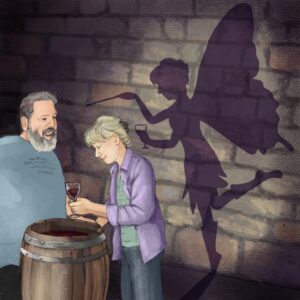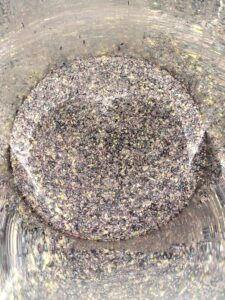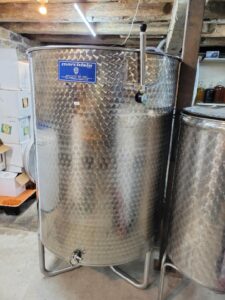
Chronicles of the Long Shot Farm
Wine
Creating New Labels
In the winery we are working on creating labels for new vintages and new wines. Getting the labels approved is a lengthy process and must contain important information like the vintage, surgeon general warning, and the ABV. Even the formulation of the wine in some cases must be approved. The artwork is the most fun part of the label to develop and is produced, in house, by Samantha Shaffer. Stay tuned for a new blend!

Introducing Oaked Chambourcin

Knows what flavors are born to marry.
Make them so deep & purple,
It’s Oaked Chamborcin she crafts to slurple.
Big & luscious & bright red berry,
Lifts the heart of our clever fairy.
Tempered body with hints of vanillin,
Her magic potion, the aged Oaked Chambourcin.
Botrytis Bunch Rot
In the vineyard, we are always subject to the whims of mother nature. It is true, that we can sometimes outwit her, by irrigating when it doesn’t rain, or covering the vines with netting to deter the birds. But there are times that we must accept her dominance over us with grace.
This fall was particularly wet. As as a result, botrytis bunch rot has settled into the Traminette and Vidal grapes. Botrytis rot can affect the grape in two ways. The first, which is the result of wet conditions, results in the loss of grapes. The second, called “noble rot,” occurs when dry conditions are followed by wet. This actually can produce distinctive sweet wines. The fungus removes water from the grapes and concentrates the sugars, acids, and minerals. Noble rot has settled into some of our vineyards.

But it is like a double edged sword. While it can impart desirable qualities to the wine, it does so at the cost of a depleted harvest. So while we are excited that the Traminette and Vidal wines this year may be exceptional, the vintages will be somewhat limited. But don’t worry, other grape varieties, like Chambourcin, have done really well, and we anticipate having a good harvest overall.
Concord Primary Fermentation
Fall is an exciting time at the Winery. With last year’s wine bottled and the harvest rolling in, its onto the new vintages! Concord grapes are one of the first varieties to be harvested. We usually begin picking them in early September. Our concords have already been pressed and gone through the primary fermentation.

 The primary fermentation is the initial conversion of sugars in the grape juice into alcohol and carbon dioxide using yeast. The wine is then syphoned or “racked” into the secondary container. This racking is important. Sediment falls out of the fermenting juice, which is primarily composed of spent yeast and grape pulp. We don’t want the wine to rest too long on the sediment as this can impart off flavors into the final wine. Wine typically spends 1 week in the primary fermentation.
The primary fermentation is the initial conversion of sugars in the grape juice into alcohol and carbon dioxide using yeast. The wine is then syphoned or “racked” into the secondary container. This racking is important. Sediment falls out of the fermenting juice, which is primarily composed of spent yeast and grape pulp. We don’t want the wine to rest too long on the sediment as this can impart off flavors into the final wine. Wine typically spends 1 week in the primary fermentation.
The concord wine will rest in the secondary tank, with occasional rackings, until it is ready to be bottled. In the meantime, we will continue to harvest, crush, and process our other varieties.



